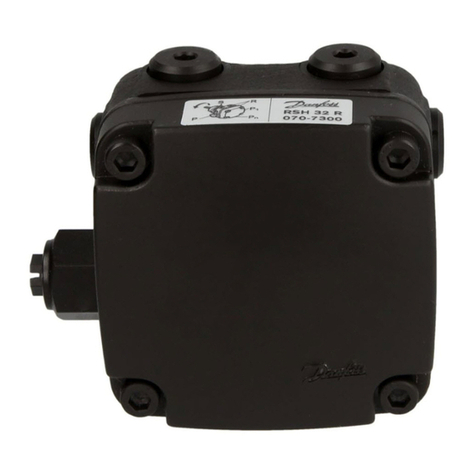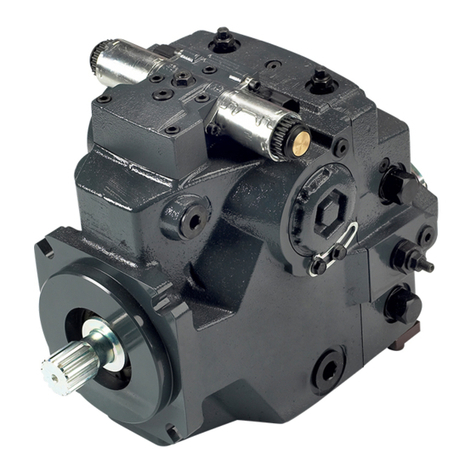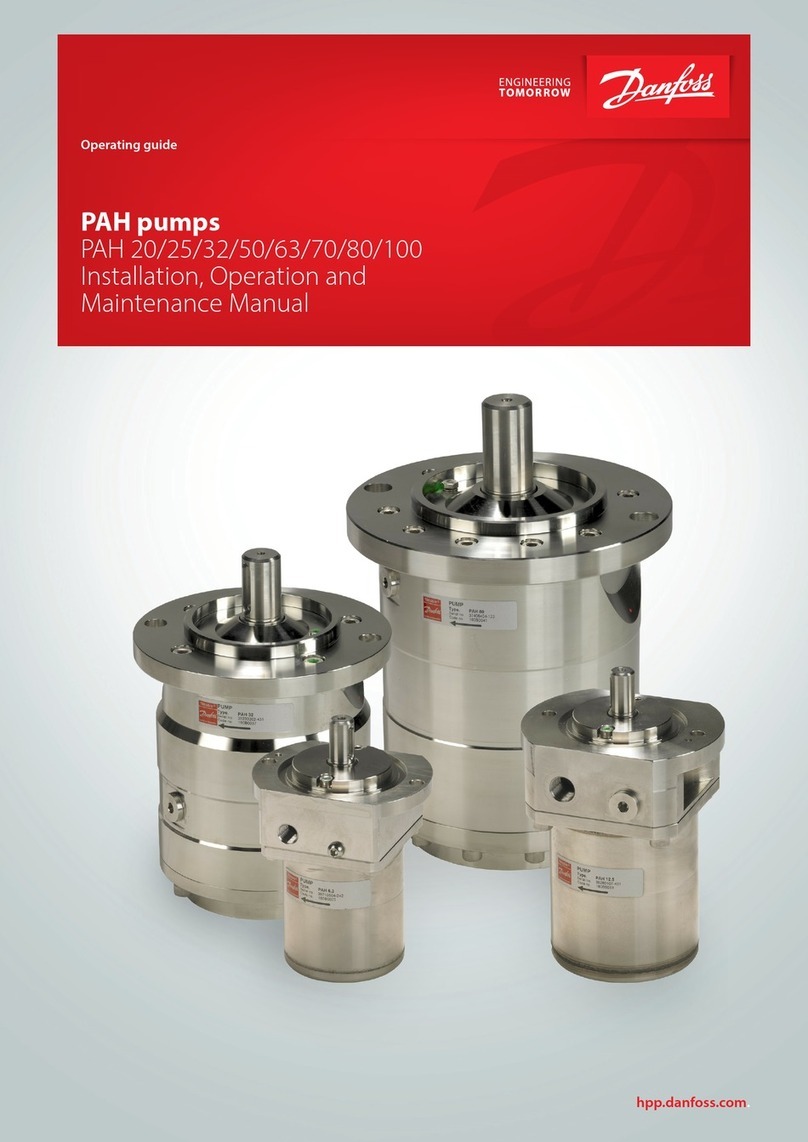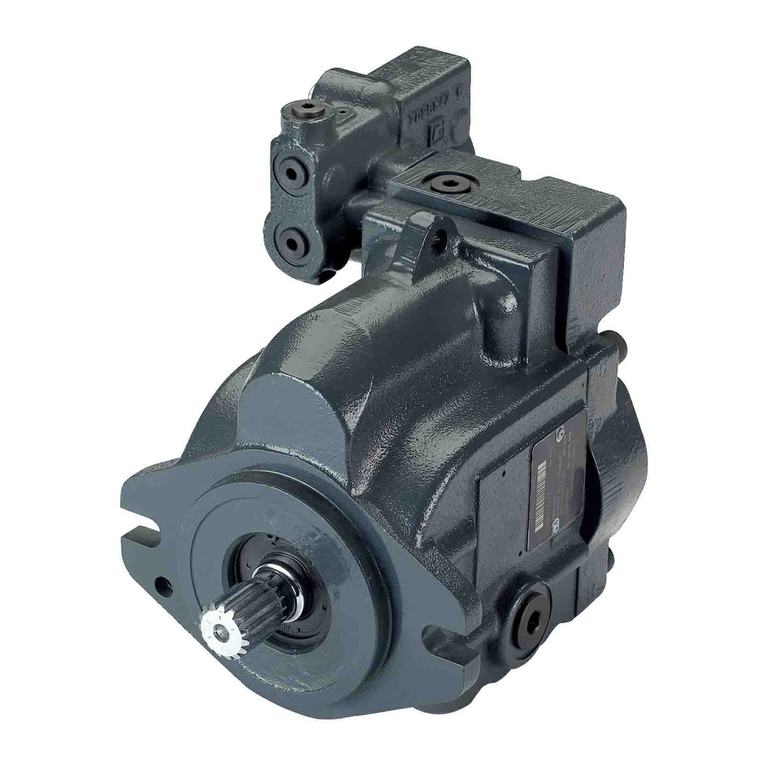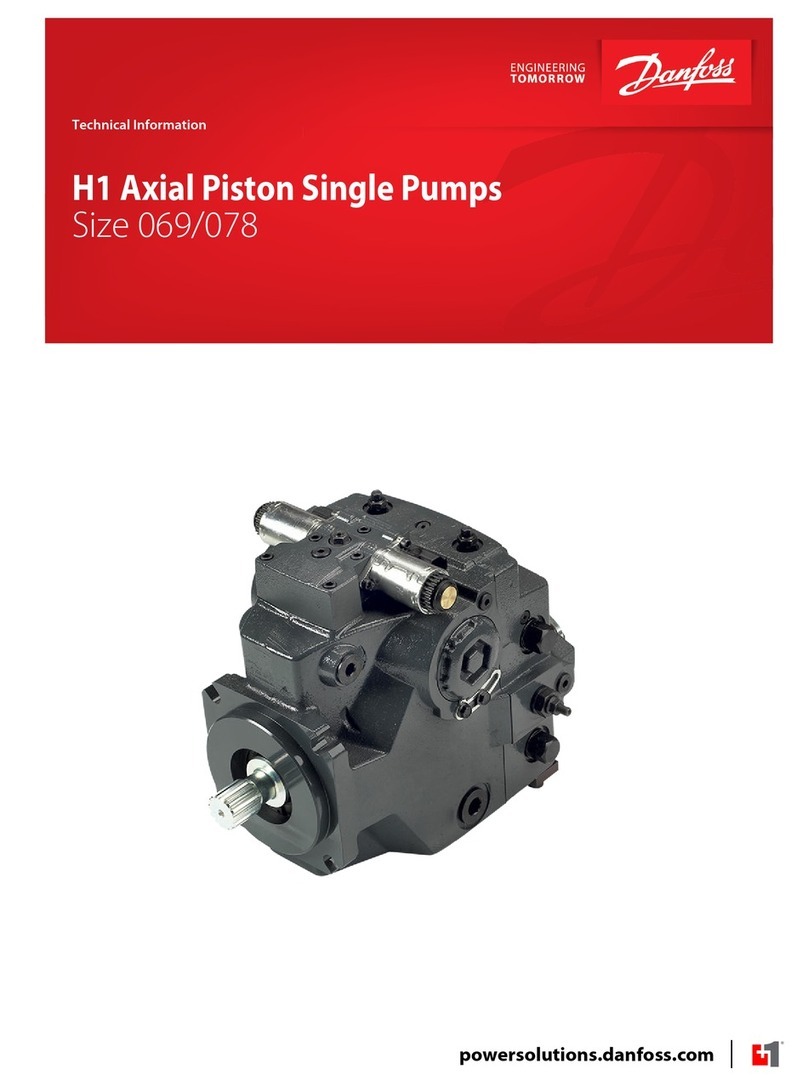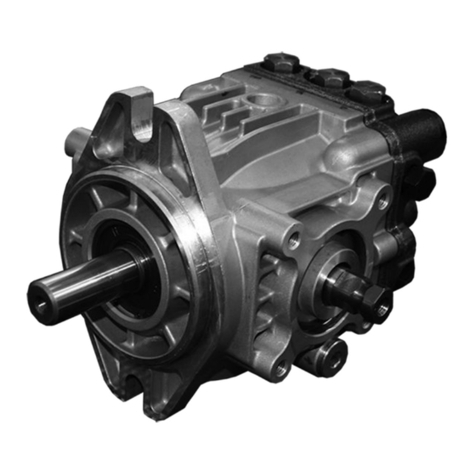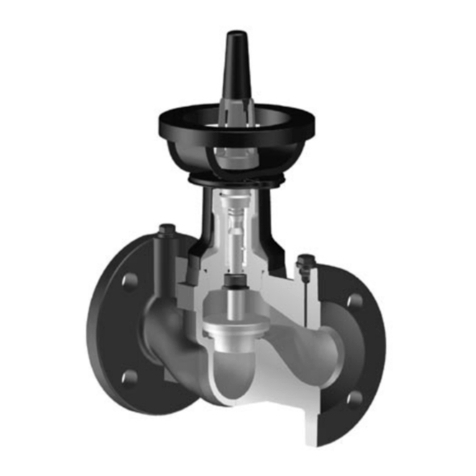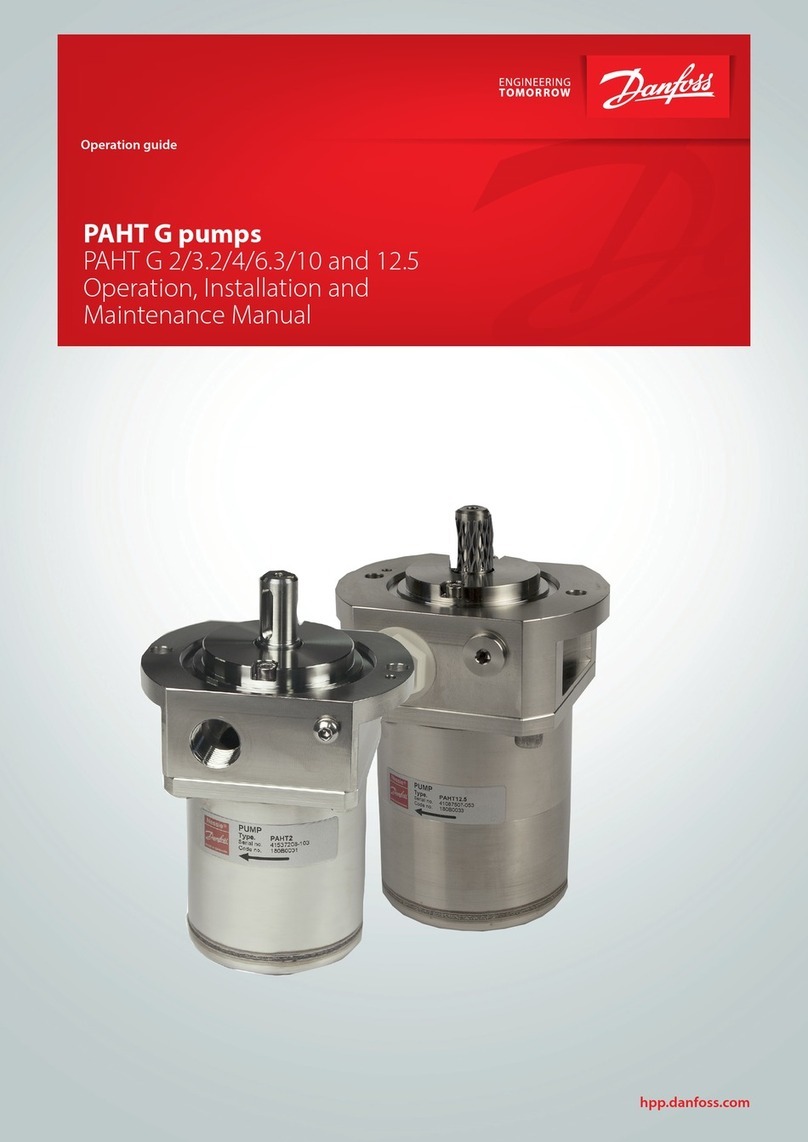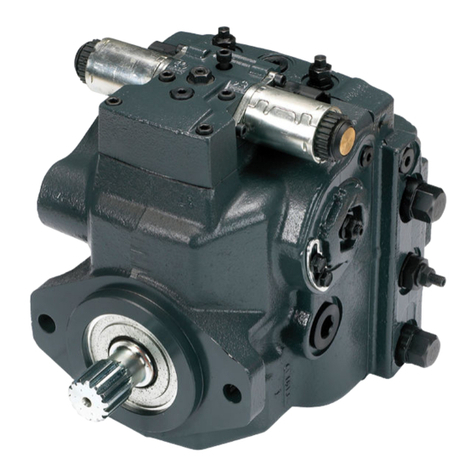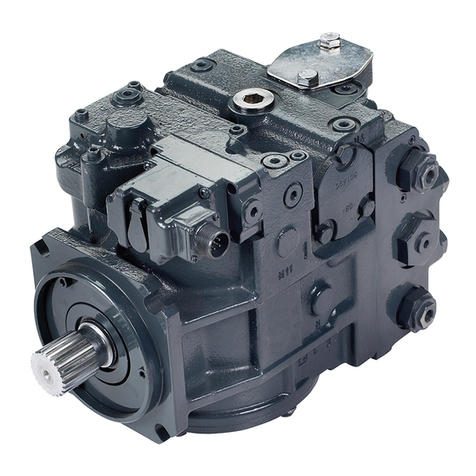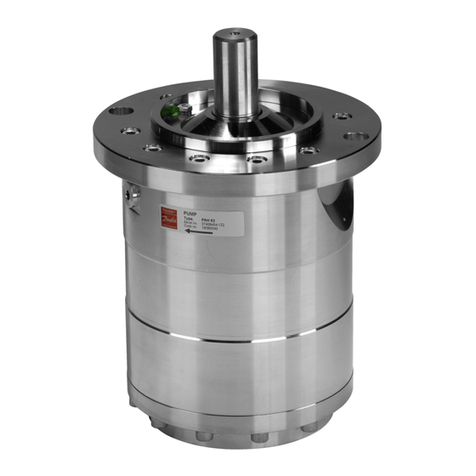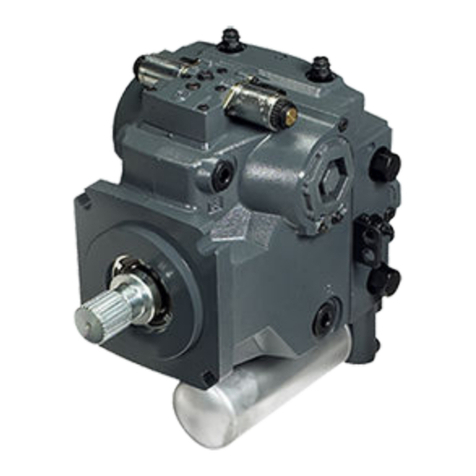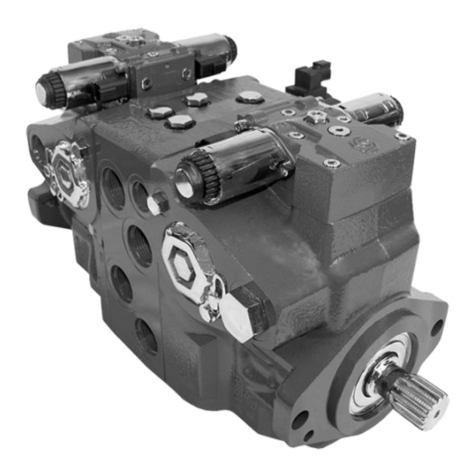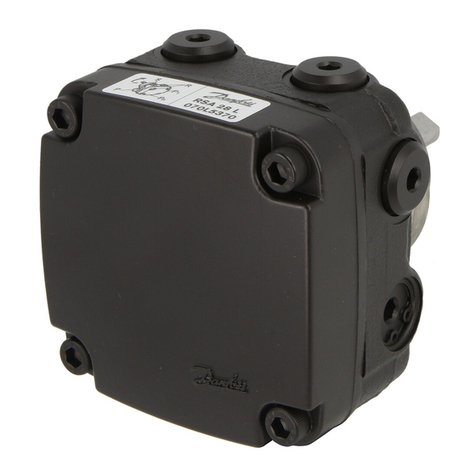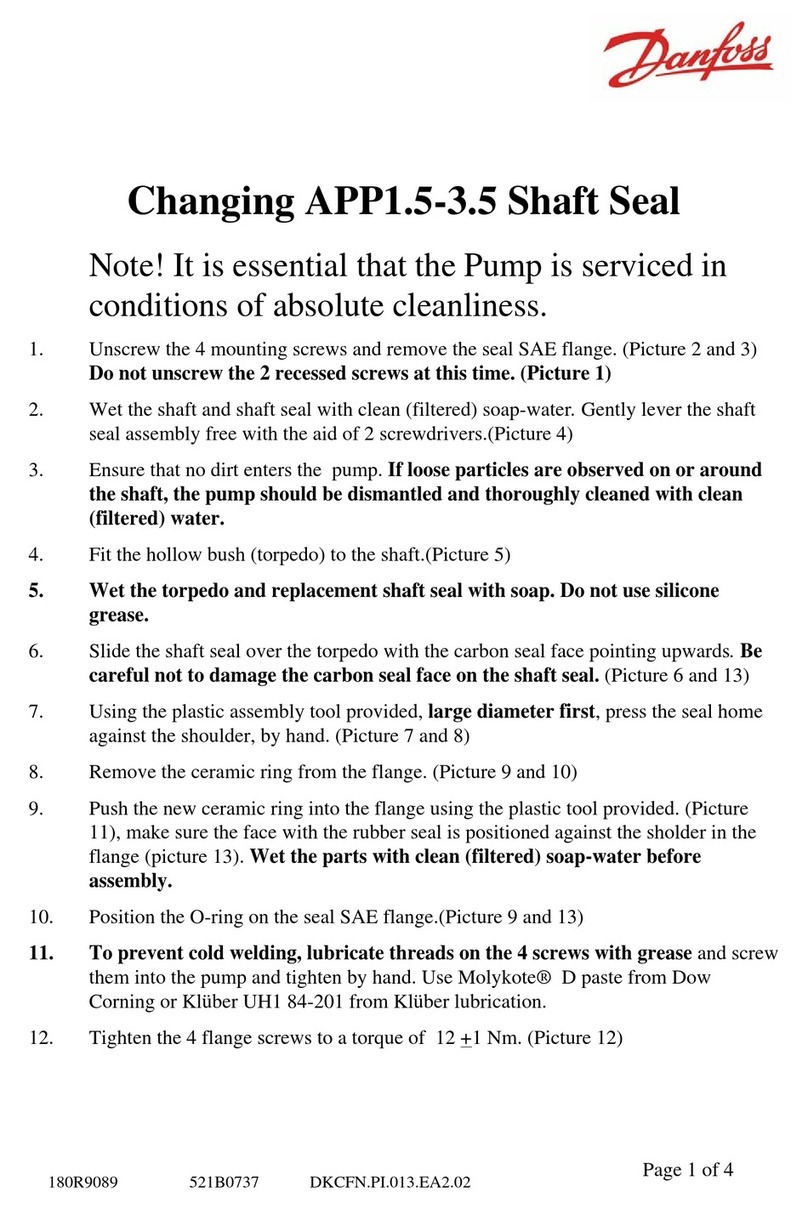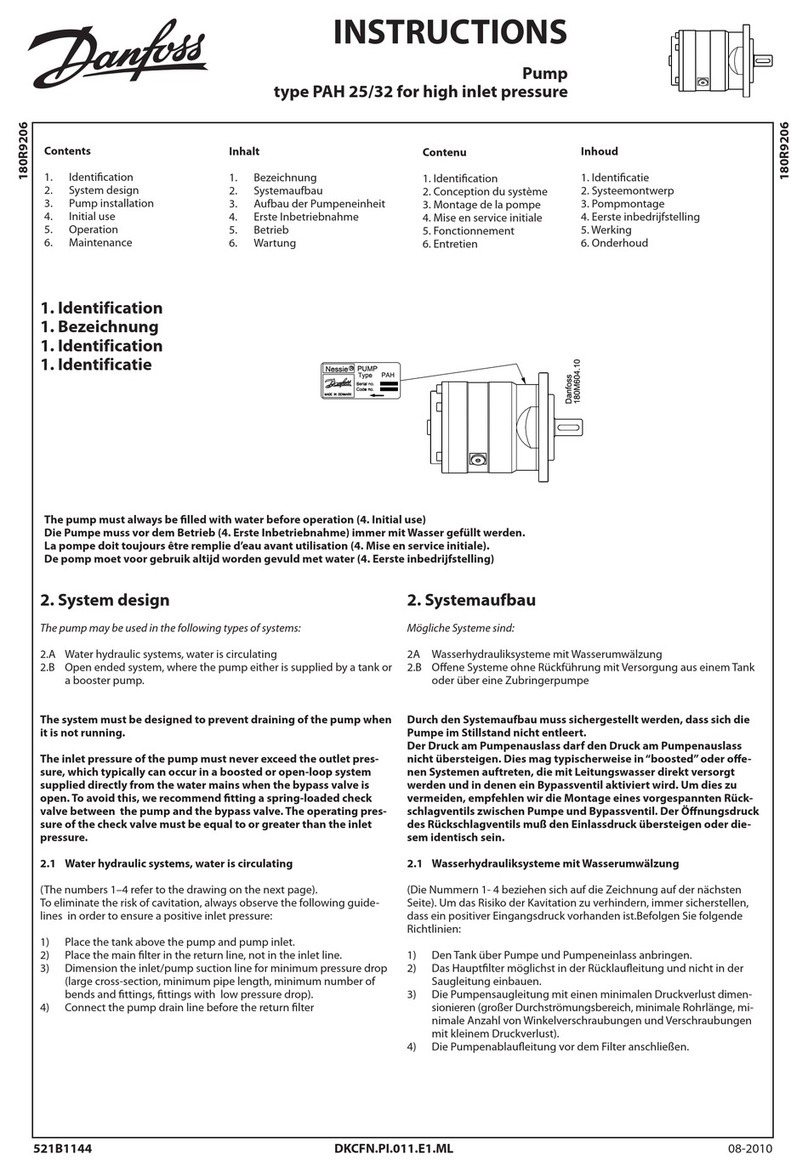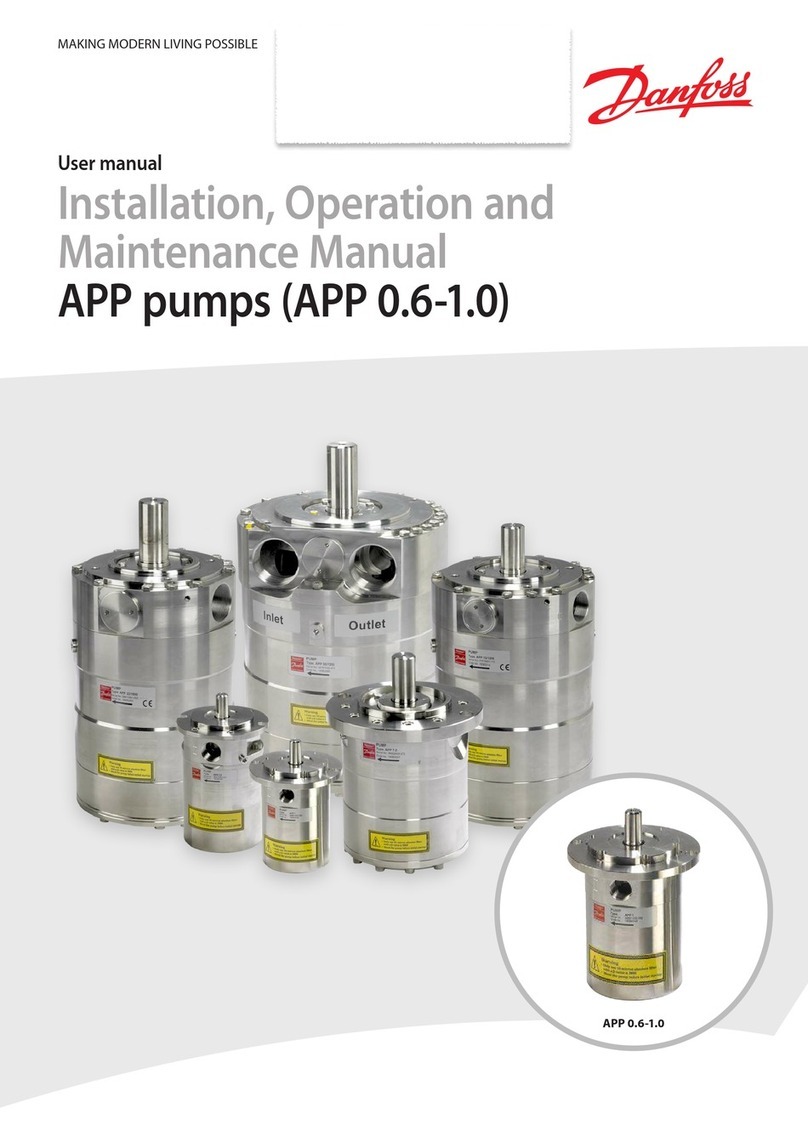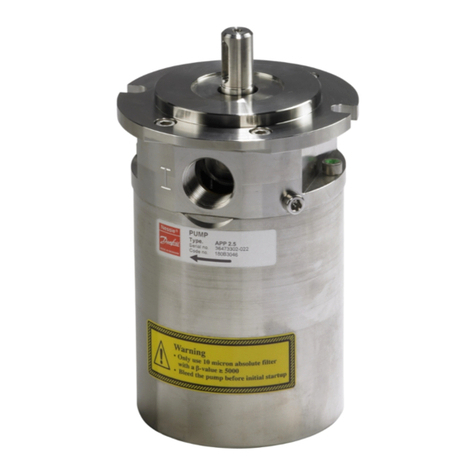
7
5. Operation
5.1 Water quality
Water of drinking water quality, conrming to the EEC directive 98/83/EC
and without abrasive sediments, demineralized water, de-ionised water,
softened water and RO water.
Please contact Danfoss sales organization in case of doubt.
5.2 Temperature
Fluid temperature:
Min. +3°C to max. +50°C.
Ambient temperature:
Min. 0°C to max. 50°C.
Storage temperature:
Min. -40°C to max. +70°C.
To protect the pump from too high uid temperature, a temperature
switch of 50 degrees Celsius should be mounted on the inlet side. If the
whole pump ow is bypassed over the relief valve, then the uid tempe-
rature will go up relatively fast.
5.3 Pressure
The inlet pressure must be min. 1 bar (atm) (14 psi) equals 2 bar abs (45
psi). At lower pressures the pump run a risk of cavitating, resulting in
damage of the pump.
Short term inlet pressure peaks must not exceed 30 bar (450 psi).
It is recommended that the normal boost pressure is 1-6 bar atm
(14-90psi).
If it is unknown what the peak inlet pressure can be, then there should
be a 15 bar (225psi) safety relief valve on the inlet side of the pump.
Max. pressure on the pump's outlet line should be limited at 160 bar
(2400 psi) continuously.
Short-term pressure peaks (e.g. in connection with closing of a
valve) of up to 200 bar (3000 psi) are acceptable.
It is recommended to have a check valve on the outlet side of the pump
to protect the pump from high pressure going backwards into the pump
when it is turned o. Especially, when using exible hose or more pumps
are installed in the same system.
5.4 Dry running
When running, the pump must always be connected to the water supply
in order to avoid damage if it should run dry.
In systems with water tank it is recommended to build in a level
gauge in the tank to avoid the risk of running dry.
In systems with a boost pump, it is strongly recommended to have a low
pressure switch mounted on the water inlet side set at minimum 2 bar
(30 psi)
5.5 Disconnection
If the inlet line is disconnected from the water supply, the pump will be
emptied of water through the disconnected inlet line.
When starting up again, follow the bleeding procedure described under
section 4: Initial start up.
5.6 Storage
When preparing the pump for long-term storage or for temperatures be-
low the freezing point, ush the pump with an anti-freeze medium type
monopropylene glycol to prevent internal corrosion or frost in the pump.
For further information on anti-freeze media, please contact the Danfoss
Sales Organization.
Recommended procedure:
5.6.1 Water hydraulic systems in which the water is recirculated
back to tank and re-used.
5.6.2 Open-ended systems with water supply from tank.
5.6.3 Open-ended systems with direct water supply.
5. Betrieb
5.1 Wasserqualität
Wasser von Trinkwasserqualität, nach EU Direktive 98/83/EC und ohne
abresiven Sedimenten, VE-Wasser, enthärtetem Wasser und
Umkehrosmose-Wasser.
Im Zweifelsfall fragen Sie bitte die Danfoss Verkaufsorganisation.
5.2 Temperatur
Druckmitteltemperatur:
Min. +3°C bis max. +50°C.
Umgebungstemperatur:
Min. 0° bis max. 50°C.
Lagertemperatur: Min. -40° bis max. +70°C.
Um die Pumpe gegen zu hohe Flüssigkeitstemperatur zu schützen, muss
ein 50 gr. C Temperaturschalter an der Einlaβseite montiert werden.
Wenn der ganze Pumpendurchuss über das Druckbegrenzungsventil
geleitet wird, wird die Flüssigkeitstemperatur relativ schnell steigen.
5.3 Druck
Der Einlaßdruck muß min. 1 bar absolut (atm) gleich 2 bar abs sein.
Ein geringerer Druck wird zu Kavitation führen.
Kurzfristige Einlaβ-Druckspitzen müssen nicht 30 bar überschreiten.
Es ist zu empfehlen, dass der normale Einlaβdruck 1-6 bar ist (14-90psi).
Bei unbekannten Spitzen Einlassdruck, sollte ein 15 bar (225psi) Überdruck-
ventil an der Einlassseite der Pumpe montiert sein.
Der max. Druck in der Druckleitung der Pumpe sollte auf 160 bar kontinu-
erlich begrenzt werden.
Kurze Druckspitzen (z.B. in Verbindung mit dem Schließen eines Ventils)
sind bis zu 200 bar möglich.
Um bei abgeschalteter Pumpe Rückwärts-Hochdruckdurchuss zurück in
die Pumpe zu vermeiden, ist es zu empfehlen, ein Rückschlagventil an der
Auslaβseite der Pumpe zu installieren, besonders in Fällen wo exible
Schläuche und mehrere Pumpen im selben System installiert sind.
5.4 Trockenlauf
Wenn die Pumpe läuft, muß sie immer an der Wasserversorgung ange-
schlossen sein, um Schäden infolge des Trockenlaufes zu verhindern.
In Anlagen mit Wassertank empfehlen wir, daß ein Wasserstandsanzeiger in
den Tank eingebaut wird, um das Risiko des Trockenlaufes zu vermeiden.
In Systemen mit einer Einlaβpumpe, ist es eindringlich zu empfehlen,
einen Druckschalter für Niederdruck an der Wasser-Einlaβseite auf mini-
mum 2 bar (30psi) eingestellt zu installieren.
5.5 Demontage
Wenn die Anschlußleitung von der Wasserversorgung demontiert wird,
entleert sich die Pumpe. Bei erneuter Inbetriebnahme, befolgen Sie bitte
die Entlüftungsprozedur unter Abschnitt 4: Erste Inbetriebnahme.
5.6 Lagerung
Vor längerdauernder Lagerung der Pumpe, oder wenn die Temperatur
unter dem Gefrierpunkt absinkt, sollte die Pumpe mit einem Frostschutz-
mittel Typ Monopropylen Glycol durchgespült werden um Korrosion oder
Frostschäden im Inneren der Pumpe zu verhindern. Für weitere Einzel-
heiten über Frostschutzmittel verständigen Sie bitte die Danfoss Verkaufs-
organisation.
Empfohlene Prozedur:
5.6.1 Wasserhydrauliksysteme in denen das Wasser rezirkuliert
und an den Tank zurückgeleitet wird.
5.6.2 Oene Systeme ohne Rückführung mit Versorgung aus einem Tank.
5.6.3 Oene Systeme ohne ohne Rückführung, mit direkter Wasser versor-
gung.
